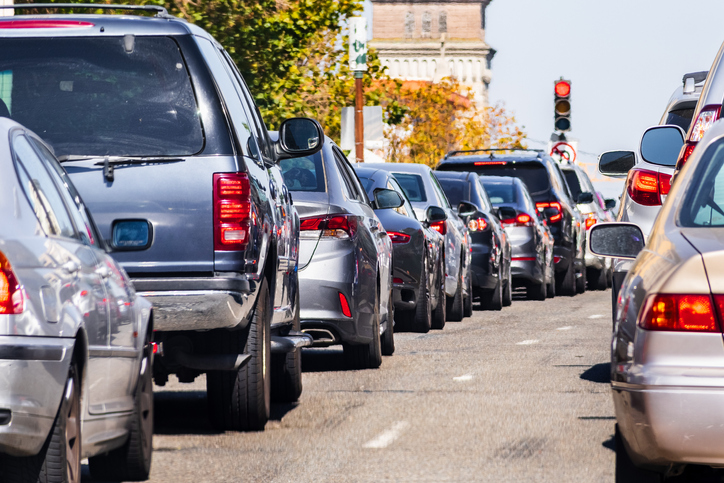By Evan Symon
The announcement by the California Independent System Operator (Cal ISO) on Wednesday asking Californian residents to not charge their electric vehicles during peak hours to help conserve electricity continued to face backlash on Thursday due to the state approving a ban on the sale of new gas powered vehicles by 2035 only a week ago.
Since September of 2020, Governor Gavin Newsom has pushed for the state to adopt a new policy eliminating the sale of new gas powered vehicles by 2035 to help meet 2045 zero carbon climate goals. At the same time, the power supply in California has been in a state of constant flux due to the same 2045 policy removing oil, gas, and coal plants at a rate faster than wind, solar, hydro, and other renewable sources of energy can replace them. On Thursday, a huge 9% loss of energy in 2025 was averted by the legislature passing a bill saving Diablo Canyon Nuclear Power Station for several more years as a bridge to help meet power needs in the state.
However, the mix of strained power supplies and a major heat wave occurring throughout the West this week and into the next week caused Cal ISO to ask Californians to not use electricity in large amounts between 4 P.M. and 9 P.M. In particular, they asked residents to voluntarily reduce their power consumption by avoiding using large appliances and charging electric vehicles during peak usage hours of 4 p.m. to 9 p.m. While many agree with using less power during these times, the inclusion of ‘charging electric vehicles’ has brought considerable criticism due to California just passing through the 2035 new gas powered car sale ban.
Within California, many who opposed the 2035 ban quickly pointed out all the flaws leading to electric cars being praised one day then the state asking people not to charge them the next.
“This is a glimpse into America’s future. It certainly is a glimpse into one path,” said former California Assemblyman Chuck DeVore on Thursday. ” I would argue it’s the wrong path, but look at this issue with the electric vehicles. I think it’s very interesting that California only has 600,000 electric vehicles on the road today out of about 20 million or so operational. If they ban internal combustion engines, you’re looking at about 2 million new electric vehicles a year and they can’t even handle 600,000. You’re looking at about 14% of California’s grid dedicated to electric vehicles when people come home from working. And if all those cars charge at the same time, that’s about one-seventh of what the grid is requiring to operate in those evening hours where things are real tight. I think we’re getting a glimpse into the future if we go all-electric and people are just constantly underestimating the enormous amount of electricity needed to make this happen.”
Nationally, California was also ridiculed by many prominent lawmakers, including House Minority Whip Steve Scalise (R-LA) who tweeted out that “California is now telling people to ‘avoid using large appliances and charging electric vehicles’ from 4-9pm. This from the same state that’s going to force everyone to buy electric cars by 2035. This is what Democrat control looks like—and they want it nationwide. What a joke.”
Many Concerned With Cal ISO Announcement
While electric car and zero emissions supporters have pointed out that these are just temporary measures during the heat wave and that California’s power supply will be in much better shape in the coming years, the Cal ISO announcement have left more in doubt of the plan. In a Globe interview, Stephen Ruiz, a car seller and buyer who focuses on hybrid and electric vehicles, noted the change in buyers questions in the last several days.
“You know, the last few days have brought up questions I never thought I’d hear before,” explained Ruiz. “Before the pandemic until a few days ago, people were really gung ho about these cars. The gas price rise brought even more people out and, just like dealerships and other buyers, I had a long list of people waiting for any electric or hybrid to come on the market. A used RAV 4 I got literally had a bidding war going over it, including bids coming from Toyota dealerships. That’s how crazy it was.
“Now, when I e-mail and call people of electric cars I have in, they aren’t snapping at them, and the reason they have given was this flex alert thing. Many think it’s permanent, but even after I tell them it’s temporary and voluntary, they still got pretty wary. Because gas, you can get that anytime. But if they keep having these charging fluxes, it could really cause a long-term wrinkle.
“Hybrids are still very popular because they still require gas to run, but it switches over to electric. You know, best of both worlds. But the state is insistent on straight electric, and, well, you can see the problems. If we don’t get more power coming in, you know, this could be disastrous for California. It’s great thinking ahead, but not when you are actively destroying peoples lives.”
More days of Cal ISO asking residents to not charge electric vehicles during certain times is expected in the coming days.
Evan V. Symon (evan@californiaglobe.com) is the senior editor for the California Globe.
Originally published by the California Globe. Republished with permission.
For more on electric vehicles, click here.
For more on California’s energy policies, click here.
